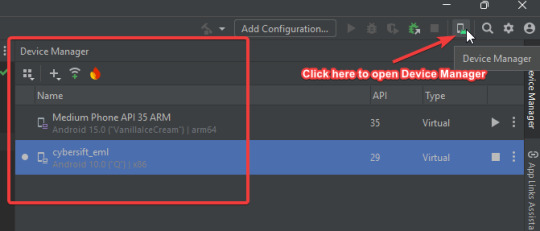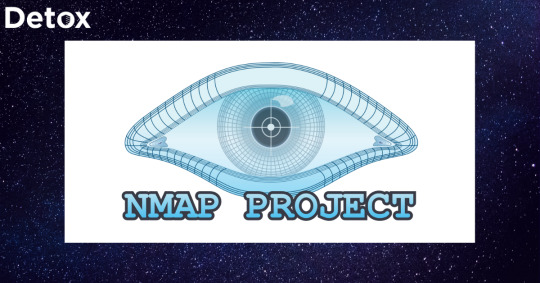#burpsuite
Explore tagged Tumblr posts
Text
An Overview of Burp Suite: Acquisition, Features, Utilisation, Community Engagement, and Alternatives.
Introduction:
Burp Suite is one of the strongest web application security testing software tools used by cybersecurity experts, as well as ethical hackers. PortSwigger created Burp Suite, which provides potent scanning, crawling, and exploiting tools for web application vulnerabilities.
What is Burp Suite?
Burp Suite is one of the tools to conduct security testing of web applications. It assists security testers in detecting vulnerabilities and weaknesses like SQL injections, XSS, CSRF, etc.
Steps in Obtaining Burp Suite
Burp Suite is available for download on the PortSwigger official website. It is available in three versions:
Community Edition (Free)
Professional Edition (Subscription-Based)
Enterprise Edition (For Organisations)
Important Tools in Burp Suite
Proxy – Captures browser traffic
Spider – Crawls web application content
Scanner – Scans automatically for vulnerabilities (Pro only)
Intruder – Performs automated attack activities.
Repeater – Manually send requests.
Decoder – Translates encoded data.
Comparer – Compares HTTP requests/responses
Extender – Allows extensions through the BApp Store
How to Use Burp Suite
Set your browser to use Burp Proxy.
Capture and manipulate HTTP/S requests.
Utilise tools such as Repeater and Intruder for testing.
Scan server responses for risks.
Export reports for audit purposes.
Burp Suite Community
Burp Suite has a highly engaged worldwide user base of security experts. PortSwigger Forum and GitHub repositories have discussions, plugins, and tutorials. Many experts are contributing through YouTube, blogs, and courses.
Alternatives to Burp Suite
If you're searching for alternatives, then look at:
OWASP ZAP (Open Source)
Acunetix
Netsparker
Nikto
Wfuzz
Conclusion:
Burp Suite is widely used for web application security testing. Mastery of Burp Suite is one step towards web application security for both novice and professional ethical hackers.

#BurpSuite#CyberSecurity#EthicalHacking#PenTesting#BugBounty#InfoSec#WebSecurity#SecurityTools#AppSec#OWASP#HackingTools#TechTools#WhiteHatHacker#CyberTools#BurpSuiteCommunity#NetworkSecurity#PortSwigger#WebAppTesting#SecurityScanner#CyberAwareness
0 notes
Text
Slingshots for a Spider
I recently finished (didn't take the test, I was just stumbling through the course, open mouthed and scared) the ineffable WEB-300: Advanced Web Attacks and Exploitation, from the magnanimous OffSec, which is the preparation course for the Offensive Security Web Expert certification (OSWE). The image is a very cool digital black widow spider, which makes sense, because the course is teaching you how to be an attacker on 'the web'.

As scared as I am of spiders, I am enamored by this course. Enough to stare at it for two years then finally take it and complete it over one grueling year. It covers things like: Blind SQL Injection - setting things up in a program called Burpsuite, to repeatedly try sending various things, then clicking a button, and seeing how a website answers, whether it gives us info or errors (which is more info!)


Authentication Bypass Exploitation - skirting around the steps that websites use to make sure you are who you say you are, like taking a 'reset password' click of a button, knowing some admin's email, and getting a database to spit out the token so we can get to the website to reset the password before the admin.



and Server-Side Request Forgery - making a server (someone else's computer in charge of doing real work instead of messing around with a human) ask its connections and resources to get something for you.

Now I know what you're probably thinking: Holy cow, where to even start? If you're not thinking that, congratulations. If you are, I've the answer: Tools. No spider is eating flies without sensing, lurking, biting... this metaphor to say: No one's doing it by hand with no help.
So what tools are helpful? How do you know what's good, what's useful, what's a dime a dozen, what's only going to do part of what you want versus all of it...

Luckily the fan favorites are famous for a reason. Just about anything you'd need is already downloaded into Kali Linux, which is jam packed with much, much more than the average hacker even needs!
Tools are dependent on what you need to do. For this class we need to inspect web traffic, recover source code, analyze said code of source, and debug things remotely.
Inspecting web traffic covers SSL / TLS and HTTP. SSL is Secure Sockets Layer and TLS is Transport Layer Security. These are literally just protocols (rules! internet rules that really smart people spent a lot of time figuring out) that encrypts traffic (mixes and chops and surrounds your communication, to keep it safe and secure). HTTP is the hypertext transfer protocol, which is another set of rules that figures out how information is going to travel between devices, like computers, web servers, phones, etc.

But do you always follow the rules? Exactly. Even by accident, a lot can fall through the cracks or go wrong. Being able to see *exactly* what's happening is pivotal in *taking advantage* of what's not dotting the i's and crossing the t's.
Possibly the most famous tool for web hacking, and the obvious choice for inspecting web traffic, is Burp Suite. It gathers info, can pause in the middle of talking to websites and connections that usually happen behind the scenes in milliseconds, like manipulating HTTP requests. You can easily compare changes, decode, the list goes on.


Decompiling source code is the one where you could find a million things that all do very specific things. For example dnSpy can debug and edit .NET assemblies, like .exe or .dll files that usually *run*, and don't get cracked open and checked inside. At least not by a normal user. .NET binaries are easier to convert back to something readable because it uses runtime compiling, rather than compiling during assembly. All you have to do is de-compile. It's the difference between figuring out what's in a salad and what's in a baked loaf of bread. One's pretty easy to de-compile. The other, you'd probably not be able to guess, unless you already knew, that there are eggs in it! dnSpy decompiles assemblies so you can edit code, explore, and you can even add more features via dnSpy plugins.


Another type of code objects useful to analyze are Java ARchive or JAR files. Another decompiler that's good for JAR files is JD-GUI, which lets you inspect source code and Java class files so you can figure out how things work.


Analyzing source code is another act that can come with a lot of options. Data enters an application through a source. It's then used or it acts on its own in a 'sink'. We can either start at the sink (bottom-up approach) or with the sources (top-down approach). We could do a hybrid of these or even automate code analysis to snag low-hanging fruit and really balance between time, effort and quality. But when you have to just *look* at something with your *eyes*, most people choose VSCode. VSCode can download an incredible amount of plug ins, like remote ssh or kubernetes, it can push and pull to gitlab, examine hundreds of files with ease, search, search and replace... I could go on!

Last need is remote debugging, which really shows what an application is doing during runtime (when it's running!). Debugging can go step-by-step through huge amalgamations using breakpoints, which can continue through steps, step over a step, step INTO a step (because that step has a huge amalgamation of steps inside of it too, of course it does!), step out of that step, restart from the beginning or from a breakpoint, stop, or hot code replace. And the best part? VSCode does this too!

Remote debugging lets us debug a running process. All we need is access to the source code and debugger port on whatever remote system we happen to be working in.
Easy, right? Only a few tools and all the time in the world... WEB-300 was mostly whitebox application security, research, and learning chained attack methods. For example, you'd do three or seven steps, which incorporate two or four attacks, rather than just one. It's more realistic, as just one attack usually isn't enough to fell a giant. And here there be giants. Worry not: we've got some slingshots now.
The next step is seeing if we can get them to work!

Useful links:
(PortSwigger Ltd., 2020), https://portswigger.net/burp/documentation
(DNN Corp., 2020), https://www.dnnsoftware.com/
(0xd4d, 2020), https://github.com/0xd4d/dnSpy
(ICSharpCode , 2020), https://github.com/icsharpcode/ILSpy
(MicroSoft, 2021), https://docs.microsoft.com/en-us/dotnet/csharp/language-reference/compiler-options/command-line-building-with-csc-exe
(Wikipedia, 2021), https://en.wikipedia.org/wiki/Cross-reference
(Wikipedia, 2019), https://en.wikipedia.org/wiki/Breakpoint
(Oracle, 2020), https://docs.oracle.com/javase/tutorial/deployment/jar/manifestindex.html
(Wikipedia, 2021), https://en.wikipedia.org/wiki/Integrated_development_environment
(Microsoft, 2022), https://code.visualstudio.com/(Wikipedia, 2021), https://en.wikipedia.org/wiki/False_positives_and_false_negatives
(Oracle, 2021), https://docs.oracle.com/javase/8/docs/technotes/guides/jpda/conninv.html#Invocation
0 notes
Text
Top 5 Tools for CTFs
Capture the Flag (CTF) competitions are a great way to test and improve your cybersecurity skills. They involve solving a variety of challenges, such as hacking into websites, cracking passwords, and reverse engineering malware.
To be successful in CTFs, it's important to have a good understanding of a variety of cybersecurity topics, as well as the right tools. Here are our top 5 picks for the best CTF tools:
Burp Suite
Burp Suite is a powerful web application security testing tool. It can be used to perform a variety of tasks, including intercepting and modifying HTTP requests and responses, scanning for vulnerabilities, and fuzzing.
Ghidra
Ghidra is a free and open-source reverse engineering tool developed by the National Security Agency (NSA). It can be used to disassemble and analyze machine code, as well as to debug and create software exploits.
Nmap
Nmap is a network mapping and security scanning tool. It can be used to identify all of the devices on a network, as well as the services they are running and the ports they are open on.
SQLMap
SQLMap is an automated SQL injection and database takeover tool. It can be used to exploit SQL injection vulnerabilities in web applications and gain access to underlying databases.
Python
Python is a general-purpose programming language that is widely used in the cybersecurity community. It is a good language for learning and scripting, and it can be used to solve a variety of CTF challenges.
In addition to these tools, it is also important to have a good understanding of the Linux command line and basic networking concepts.
Here are some additional tips for success in CTFs:
Practice regularly. The more CTF challenges you solve, the better you will become at it. Work with a team. CTFs are often more fun and successful when you work with others. Don't be afraid to ask for help. There are many people who are willing to help beginners learn about CTFs and cybersecurity. With the right tools and skills, you can be successful in your next CTF competition!
0 notes
Text
youtube
How To Generate Secure PGP Keys | CyberSecurityTV
🌟In the previous episodes we learned about encryption and decryption. Today, I will show you a couple methods to generate PGP keys and we will also see some of the attributes that we need to configure in order to generate a secure key. Once you have the key, we will also see how to use them to securely exchange the information.
#owasptop10#webapppentest#appsec#applicationsecurity#apitesting#apipentest#cybersecurityonlinetraining#freesecuritytraining#penetrationtest#ethicalhacking#burpsuite#pentestforbegineers#Youtube
0 notes
Text
👩🏻💻 𝙰𝚛𝚌𝚑𝚒𝚟𝚒𝚘 𝚍𝚒 𝚜𝚝𝚛𝚞𝚖𝚎𝚗𝚝𝚒 𝚙𝚎𝚛 𝚌𝚢𝚋𝚎𝚛𝚜𝚎𝚌𝚞𝚛𝚒𝚝𝚢 𝚌𝚑𝚎 𝚖𝚒 𝚟𝚎𝚗𝚐𝚘𝚗𝚘 𝚌𝚘𝚗𝚜𝚒𝚐𝚕𝚒𝚊𝚝𝚒 𝚘 𝚌𝚒𝚝𝚊𝚝𝚒 𝚗𝚎𝚕 𝚝𝚎𝚖𝚙𝚘
AnyRun: cloud-based malware analysis service (sandbox).
Burp Suite: a proprietary software tool for security assessment and penetration testing of web applications. La community edition, gratis, contiene Burp Proxy and Interceptor (intercetta le richieste effettuate dal browser, consente modifiche on-the-fly e di modificare le risposte; utile per testare applicazioni basate su javascript), Burp Site Map, Burp Logger and HTTP History, Burp Repeater (consente di replicare e modificare le richieste effettuate, aggiungere parametri, rimuoverli, ecc), Burp Decoder, Burp Sequencer, Burp Comparer, Burp Extender (estensioni delle funzionalità di burpsuite, plugin specializzati per individuare bug specifici, automatizzare parte delle attività, ecc) e Burp Intruder (consente di iterare richieste con payload differenti e automatizzare attività di injection).
CyberChef: is a simple, intuitive web app for carrying out all manner of "cyber" operations within a web browser. These operations include simple encoding like XOR and Base64, more complex encryption like AES, DES and Blowfish, creating binary and hexdumps, compression and decompression of data, calculating hashes and checksums, IPv6 and X.509 parsing, changing character encodings, and much more.
DorkSearch: an AI-powered Google Dorking tool that helps create effective search queries to uncover sensitive information on the internet.
FFUF: fast web fuzzer written in Go.
GrayHatWarfare: is a search engine that indexes publicly accessible Amazon S3 buckets. It helps users identify exposed cloud storage and potential security risks.
JoeSandbox: detects and analyzes potential malicious files and URLs on Windows, Mac OS, and Linux for suspicious activities. It performs deep malware analysis and generates comprehensive and detailed analysis reports.
Nikto: is a free software command-line vulnerability scanner that scans web servers for dangerous files or CGIs, outdated server software and other problems.
Nuclei: is a fast, customizable vulnerability scanner powered by the global security community and built on a simple YAML-based DSL, enabling collaboration to tackle trending vulnerabilities on the internet. It helps you find vulnerabilities in your applications, APIs, networks, DNS, and cloud configurations.
Owasp Zap: Zed Attack Proxy (ZAP) by Checkmarx is a free, open-source penetration testing tool. ZAP is designed specifically for testing web applications and is both flexible and extensible. At its core, ZAP is what is known as a “manipulator-in-the-middle proxy.” It stands between the tester’s browser and the web application so that it can intercept and inspect messages sent between browser and web application, modify the contents if needed, and then forward those packets on to the destination. It can be used as a stand-alone application, and as a daemon process.
PIA: aims to help data controllers build and demonstrate compliance to the GDPR. It facilitates carrying out a data protection impact assessment.
SecLists: is the security tester's companion. It's a collection of multiple types of lists used during security assessments, collected in one place. List types include usernames, passwords, URLs, sensitive data patterns, fuzzing payloads, web shells, and many more.
SQLMAP: is an open source penetration testing tool that automates the process of detecting and exploiting SQL injection flaws and taking over of database servers. It comes with a powerful detection engine, many niche features for the ultimate penetration tester and a broad range of switches lasting from database fingerprinting, over data fetching from the database, to accessing the underlying file system and executing commands on the operating system via out-of-band connections.
Subfinder: fast passive subdomain enumeration tool.
Triage: cloud-based sandbox analysis service to help cybersecurity professionals to analyse malicious files and prioritise incident alerts and accelerate alert triage. It allows for dynamic analysis of files (Windows, Linux, Mac, Android) in a secure environment, offering detailed reports on malware behavior, including malicious scoring. This service integrates with various cybersecurity tools and platforms, making it a valuable tool for incident response and threat hunting.
VirusTotal: analyse suspicious files, domains, IPs and URLs to detect malware and other breaches, automatically share them with the security community.
Wayback Machine: is a digital archive of the World Wide Web founded by Internet Archive. The service allows users to go "back in time" to see how websites looked in the past.
Wapiti: allows you to audit the security of your websites or web applications. It performs "black-box" scans of the web application by crawling the webpages of the deployed webapp, looking for scripts and forms where it can inject data. Once it gets the list of URLs, forms and their inputs, Wapiti acts like a fuzzer, injecting payloads to see if a script is vulnerable.
WPScan: written for security professionals and blog maintainers to test the security of their WordPress websites.
✖✖✖✖✖✖✖✖✖✖✖✖✖✖✖✖✖✖✖✖✖✖✖✖
👩🏻💻𝚂𝚒𝚝𝚒-𝚕𝚊𝚋𝚘𝚛𝚊𝚝𝚘𝚛𝚒
flAWS: through a series of levels you'll learn about common mistakes and gotchas when using Amazon Web Services (AWS).
flAWS2: this game/tutorial teaches you AWS (Amazon Web Services) security concepts. The challenges are focused on AWS specific issues. You can be an attacker or a defender.
✖✖✖✖✖✖✖✖✖✖✖✖✖✖✖✖✖✖✖✖✖✖✖✖
👩🏻💻𝙱𝚛��𝚟𝚎 𝚕𝚒𝚜𝚝𝚊 𝚍𝚒 𝚜𝚒𝚝𝚒 𝚊𝚙𝚙𝚘𝚜𝚒𝚝𝚊𝚖𝚎𝚗𝚝𝚎 𝚟𝚞𝚕𝚗𝚎𝚛𝚊𝚋𝚒𝚕𝚒 𝚜𝚞 𝚌𝚞𝚒 𝚏𝚊𝚛𝚎 𝚎𝚜𝚎𝚛𝚌𝚒𝚣𝚒𝚘
http://testphp.vulnweb.com
0 notes
Text
Intercepting Flutter app traffic
Introduction this is an extract and sample of some of the work we do while pentesting in CyberSift Flutter and the underlying dart engine do not respect certificate and proxy system settings. Sometimes, frameworks like reFlutter dont work 😢 The below helps get around this. The idea at a high level is to: Setup a burpsuite transparent proxy Transfer the burpsuite CA to a rooted android…

View On WordPress
0 notes
Text
Parrot Security OS
ハッカー、セキュリティ専門家、開発者、システム管理者、ネットワークエンジニア…のためのOSと謳われてるだけに、どれにも掠りもしない自分(プー)が使うのは躊躇するんだけどね。
CentOSやRHELといったサーバー向きのLinuxくらいしか触ったことがないけど、日常使いにとても良いOSな気はしてる。Ubuntuよりも勝手が良いと思う。
ペネトレーションツールを使いたい願望はあるものの、数は多いし、ターミナルが起動するだけで何をして良いのかわからんのが多い。 といってBurpSuit CEみたいにGUI画面が起動しても、それはそれでわからないんだけど。ま、要は使う俺の基礎知識がないだけのこと。
0 notes
Text
Top Mobile Application Penetration Testing Tools for Android and iOS

A native mobile application is subjected to a security evaluation known as a “mobile application penetration test.” A smartphone-specific app is referred to as a “native mobile application.” It is programmed in a particular language designed for the corresponding operating system, usually Swift for iOS and Java, BASIC, or Kotlin for Android.
In the context of the mobile application, “data at rest” and “data in transit” security testing are often included in mobile app penetration tests. No matter if it is an Android, iOS, or Windows Phone app, this is true. As part of a penetration test, tools are used to automate some operations, increase testing speed, and detect flaws that can be challenging to find using only human analytic techniques.
In order to ensure exceptional accuracy and to harden a mobile app against malicious assaults, a manual penetration test offers a wider and deeper approach. While vulnerability assessments are responsible for identifying security flaws, penetration testing confirms that these issues are real and demonstrates how to take advantage of them. In order to access both the network level and important applications, penetration testing targets the app’s security flaws and weaknesses throughout the environment.
The mobile application vulnerability assessment and penetration testing (VAPT) locates exploitable flaws in code, systems, applications, databases, and APIs before hackers can find and take advantage of them. Utilizing harmful apps has the potential to be risky, and untested apps could include faults that expose the data of your company.
There is lots of mobile application penetration testing (android or iOS) tools available but we mentioned important mostly used tools or software’s.
Mobile Application (Android and iOS) Scanner:
MobSF: https://github.com/MobSF/Mobile-Security-Framework-MobSF
Android:
1. Apktool: https://apktool.org/
2. dex2jar: https://github.com/pxb1988/dex2jar
3. jadx-gui: https://github.com/skylot/jadx/releases
4. jd-gui: https://github.com/java-decompiler/jd-gui/releases/tag/v1.6.6
5. ClassyShark: https://github.com/google/android-classyshark/releases/tag/8.2
6. Bytecode-Viewer: https://github.com/Konloch/bytecode-viewer/releases/tag/v2.11.2
7. SDK Platform-Tools: https://developer.android.com/tools/releases/platform-tools
8. DB Browser for SQLite: https://sqlitebrowser.org/dl/
9. Frida: https://github.com/frida/frida
10. Objection: https://github.com/sensepost/objection
11. fridump: https://github.com/Nightbringer21/fridump
12. Magisk Manager: https://magiskmanager.com/
13. Xposed Framework: https://forum.xda-developers.com/t/official-xposed-for-lollipop-marshmallow-nougat-oreo-v90-beta3-2018-01-29.3034811/
14. PoxyDroid: From Playstore
IOS:
1. plist-viewer: https://github.com/TingPing/plist-viewer/releases
2. Ghidra: https://ghidra-sre.org/
3. Frida: https://github.com/frida/frida
4. Objection: https://github.com/sensepost/objection
5. fridump: https://github.com/Nightbringer21/fridump
6. iOS App Dump: https://github.com/AloneMonkey/frida-ios-dump
7. Jailbreaking Apps:
Unc0ver: https://unc0ver.dev/
Checkra1n: https://checkra.in/
8. Otool: Available with Xcode - https://inesmartins.github.io/mobsf-ipa-binary-analysis-step-by-step/index.html
9. 3uTools: http://www.3u.com/
10. Keychain Dumper: https://github.com/ptoomey3/Keychain-Dumper
11. Cydia Apps:
SSL Killswitch 2
Shadow
Liberty
Frida
12. Strings: https://learn.microsoft.com/en-us/sysinternals/downloads/strings
13. DB Browser for SQLite: https://sqlitebrowser.org/dl/
14. Hopper: https://www.hopperapp.com/
15. Burpsuite: https://portswigger.net/burp/communitydownload
In essence, the mobile application VAPT locates exploitable flaws in code, systems, applications, databases, and APIs before hackers can find and take advantage of them. Utilizing harmful apps has the potential to be risky, and untested apps could include faults that expose the data of your company. The mobile application penetration testing services by Elanus Technologies identify security risks in android and iOS apps and devices. Get in touch to secure your devices today!
0 notes
Link
#wireshark#DigitalForensics#ComputerForensics#Databaseforensics#MobileForensics#Security#BurpSuite#Cybersecurity#DFIR#Hacking#D3#Scanning#Bugbounty
6 notes
·
View notes
Text
youtube
#twitch#twitchtv#twichstreamer#virtual youtuber#youtubechannel#youtube#vtuber#español#emilydoggy#eruptor#girl burp#girl streamer#fat girls#burp audio#burp#burping#burpsuite
2 notes
·
View notes
Photo

HTTP Verb Tampering takes advantage of insecure and poorly configured web servers and the way they handle HTTP Verb requests. Use the OPTIONS verb to see what HTTP methods are accepted by the server. Play around with what's accepted and send the server a response it wasn't expecting. How will it react? . . . . . . . . #webapp #bugbounty #owasp #burpsuite #terminal #termux #terminator #bash #shell #hacker #hackers #ethicalhacker #ethicalhackers #redhat #redteam #code #developer #kalilinux #debian #dev #computersciencestudent #programming #programmer #pentester #computer #ubuntu #cp #cyberpayload https://www.instagram.com/p/CZdzRqXrHIO/?utm_medium=tumblr
#webapp#bugbounty#owasp#burpsuite#terminal#termux#terminator#bash#shell#hacker#hackers#ethicalhacker#ethicalhackers#redhat#redteam#code#developer#kalilinux#debian#dev#computersciencestudent#programming#programmer#pentester#computer#ubuntu#cp#cyberpayload
4 notes
·
View notes
Photo

I believe we have discussed that we will not use "Your go-to", also try to make moto clear, either Application developer or Services.
Your go-to Application Development. Visit : https://bit.ly/2USoT7h Whatsapp at +91- 9457741677 Gortnm Innovations Pvt. Ltd. Mail : [email protected]
#software#Backend#application#API#Analytics#webapp#testing#testingservices#DataScience#burpsuite#toolmaker#tech#softwaredevelopment#gortnm#projects#Desktop#HybridApp#programming#Softwaretesting#IT#technology#business#India#dubai#mobileapplications#USA#Canada
1 note
·
View note
Text
youtube
PGP Generation | CyberSecurityTV
🌟I will show you a couple methods to generate PGP keys and we will also see some of the attributes that we need to configure in order to generate a secure key. Once you have the key, we will also see how to use them to securely exchange the information.
#cybersecurityonlinetraining#freesecuritytraining#penetrationtest#ethicalhacking#burpsuite#pentestforbegineers#Youtube
0 notes
Text
"I bet you burp up pure beauty.."
You're seriously THAT beautiful, haha - eUë
#belly burp#burp kink#burpled#burpsuite#you are beautiful#beauty#beautiful#beautiful smile#she's gorgeous#gorgeous#i love you#you are hot#you are sexy#you are cute#you make me feel#me trying to flirt#flirt with me#flirty#flirting#spilled ink#spilled thoughts#spilled words#love quotes#love quote life quotes#love quote for her#romance#quoteoftheday#romantic#love#life quotes
7 notes
·
View notes
Text
5 Best Security Testing Tools of 2020
There are various tools used for security testing, but here we are going to talk about the 5 best vulnerability assessment and penetration testing tools that are commonly used while performing security tests. At Detox Technologies, we use these tools in security testing:
1- Burp Suite:

Burp Suite is the world’s most widely used web application security testing software. It comes in 2 versions – Burp Suite Professional for hands-on testers, and Burp Suite Enterprise Edition with scalable automation and CI integration. Burp Suite is an integrated platform for web application security testing.
2- AppScan:

Previously known as IBM AppScan is now known as the HCL Appscan standard is one of the best web application security testing tools. It is a dynamic analysis testing tool designed for security experts and penetration testing experts to use when performing security tests on web applications.
3- Nmap:

The Network Mapper is a free and open-source tool for network discovery and security auditing. Nmap is used to detect the live host on the network (host discovery), also detects the open ports on the host.
4- Nessus:

Nessus is a remote security scanning tool used during vulnerability assessment and penetration testing. This is a free and open-source tool for non-enterprises use. Nessus scans for vulnerabilities on Windows and Unix systems, these qualities make this tool all-rounder. This tool is best for security testing teams and penetration experts.
5- Metasploit:

Metasploit is a very popular hacking and penetration testing tool. It is a penetration testing framework which makes finding vulnerabilities very easy. Metasploit is often used to break into remote systems or test for a computer system vulnerability. Metasploit finds security issues, verify vulnerability mitigation & manages security assessments.
Apart from these tools, there are more tools to find security vulnerabilities. What do you think, which tool is commonly used in the above list? Also, please let us know if we have missed any particular tool, which should be mentioned in the above tools list.
#cybersecurity#cybersecuritytools#security testing#security testing tools#metasploit#burpsuite#nmap#nessus#appscan
3 notes
·
View notes
Text
youtube
Content Security Policy provides defense in depth against XSS and other injection vulnerabilities. Let's look through the Facebook CSP policy for evaluation. This tool is a very easy way to review and evaluate CSP.
#owasptop10#webapppentest#appsec#applicationsecurity#apitesting#apipentest#cybersecurityonlinetraining#freesecuritytraining#penetrationtest#ethicalhacking#burpsuite#pentestforbegineers#Youtube
0 notes